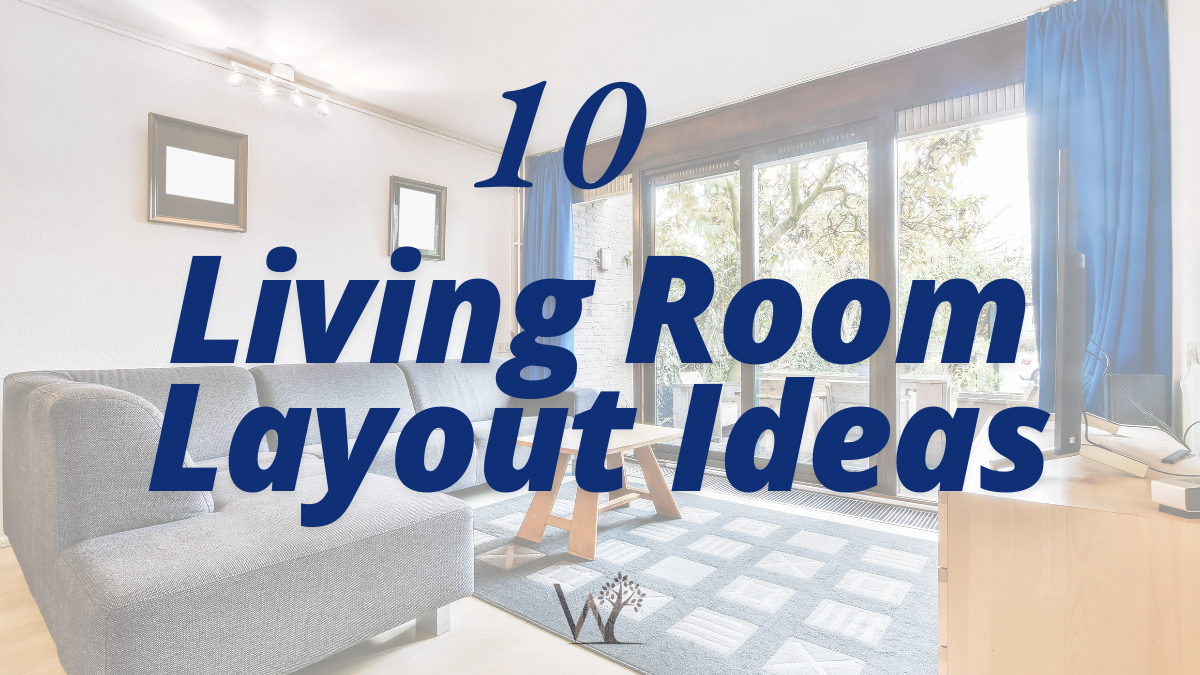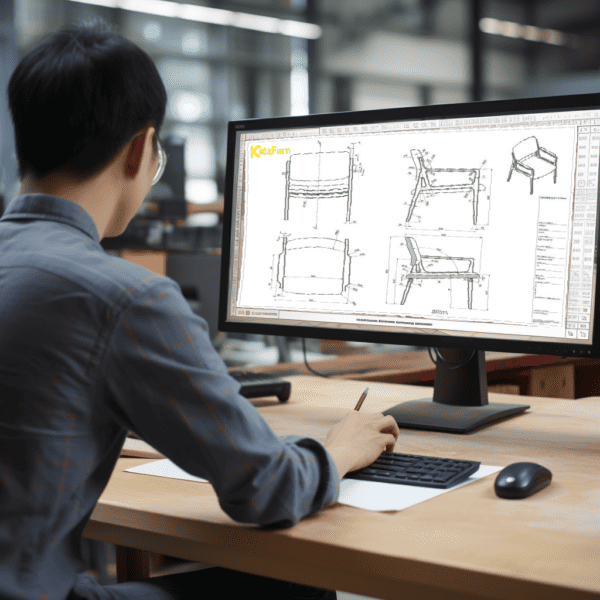Ever wondered why some daycares feel like a second home while others leave kids (and parents) uneasy? The secret isn’t just in the smiles of caregivers—it’s rooted in the furniture. From toxin-free tables to ergonomic tiny chairs, every piece plays a pivotal role in safeguarding little adventurers and nurturing their curiosity.
Daycare furniture isn’t just decor—it’s a high-stakes puzzle where safety meets whimsy. Flimsy materials? A ticking time bomb. Poor ergonomics? A stealthy saboteur of posture. Yet, when chosen thoughtfully, these pieces transform into non-toxic fortresses that withstand sticky fingers, endless energy, and the occasional crayon mural.
Beyond durability, the right designs act as silent partners in early development. Imagine shelves that whisper “explore me” or nap mats that hug tired toddlers into dreamland. Ready to crack the code? Let’s dive into the art—and science—of crafting spaces where safety and comfort aren’t just checkboxes, but the heartbeat of every choice.
I. Understanding the Importance of High-Quality Daycare Furniture
Why Safety and Comfort Matter in Daycares
Safety and comfort are the foundation of any well-designed daycare environment. The right child-safe furniture minimizes injury risks while providing a structured, secure space for young learners.
Comfortable seating enhances focus, allowing children to stay engaged in activities without distraction or discomfort.
Properly chosen daycare furniture also supports posture and motor skill development, ensuring that children sit, move, and interact in a way that promotes healthy growth.
The Impact of Ergonomic Seating on Child Development
The right seating solutions are more than just a place for kids to sit—they actively contribute to their development. Ergonomic seating plays a crucial role in maintaining proper posture, reducing strain on growing bodies, and preventing long-term health issues.
- Well-designed toddler chairs encourage proper spinal alignment, supporting early posture habits.
- Adjustable height tables accommodate children of different ages, ensuring that each child maintains a comfortable and natural sitting position.
- Soft seating for kids provides flexible, sensory-friendly furniture that helps reduce restlessness and promotes engagement.
Common Injuries Caused by Poor-Quality Furniture
When daycare furniture is not designed with safety in mind, accidents become a frequent issue. Poor construction, unstable frames, and improper material choices can create significant hazards.
- Falls from unstable chairs or improperly balanced preschool tables can lead to head injuries or fractures.
- Sharp edges on wooden daycare furniture increase the risk of cuts and bruises.
- Tipping hazards from lightweight plastic daycare chairs can cause serious injuries if not properly stabilized.
High-quality, impact-resistant furniture prevents many of these risks, offering a safer space for both structured learning and free play.
II. Key Safety Standards for Daycare Furniture
What Safety Certifications Should You Look For?
When purchasing furniture for a daycare, safety certifications provide assurance that the materials and construction meet industry standards. Below is a comparison of essential certifications:
| Certification | Purpose | Benefits |
|---|---|---|
| ASTM | Ensures structural integrity | Prevents tipping and breakage |
| BPA-Free | Guarantees non-toxic furniture materials | Reduces chemical exposure risks |
| Fire-Resistant | Meets fire safety codes | Limits fire hazards in case of emergencies |
These certifications are essential for ensuring compliance with daycare safety regulations and daycare licensing requirements. Without them, furniture may pose hidden dangers that put children at risk.
Essential Features of Child-Safe Furniture
Beyond certifications, choosing the right furniture involves understanding the key safety features that contribute to a secure daycare environment.
- Rounded edges prevent cuts and bruises from accidental bumps.
- Non-toxic furniture materials eliminate exposure to harmful chemicals, ensuring a safer environment.
- Stable, anti-tip designs keep stackable chairs and preschool tables from easily falling over.
- Space-saving furniture solutions maximize room without creating cramped or hazardous areas.
Fire and Hygiene Safety Considerations
Daycares are high-traffic environments, making both fire safety and cleanliness top priorities. Properly selected furniture should contribute to both.
- Fire-resistant materials, such as those meeting ASTM safety standards, reduce the spread of flames in case of an emergency.
- Wipeable, stain-resistant finishes simplify the process of cleaning daycare furniture, helping maintain hygiene standards.
- Regular disinfection of daycare storage bins and early childhood classroom furniture prevents the spread of bacteria and illnesses.
A well-thought-out daycare design includes furniture that meets all these safety criteria while also being durable enough to withstand daily wear and tear.
III. Choosing Age-Appropriate Daycare Furniture
Best Furniture for Infants and Toddlers
Furniture for infants and toddlers should focus on safety, accessibility, and comfort. At this stage, children are still developing motor skills, so furniture should support movement without posing a risk of injury. The materials should also be easy to clean, as young children tend to make frequent messes.
- Soft seating for kids is essential for preventing injuries as toddlers learn to sit and stand independently. Cushioned chairs, padded mats, and floor cushions help create a safe, flexible environment for play and relaxation.
- Low toddler chairs and preschool tables ensure that young children can easily sit and get up without assistance. The height should be appropriate for small children to prevent tipping or falling hazards.
- Montessori furniture encourages hands-on exploration by offering child-accessible shelving, activity tables, and interactive pieces that promote independence and sensory development. These pieces are designed with child-friendly materials and smooth edges for added safety.
Preschool Classroom Essentials
Preschool classrooms require a balance between structured learning and play. The furniture should be adaptable, durable, and organized to support various daily activities.
- Adjustable height tables provide flexibility, allowing teachers to accommodate different age groups and learning styles. These tables also support posture and make it easier for children to engage in activities without discomfort.
- Stackable chairs offer practical classroom organization by making it easy to store and rearrange seating. They help maximize space in small classrooms while maintaining accessibility for young children.
- Space-saving furniture solutions, such as foldable tables and modular seating, optimize classroom layout for daycares. These designs ensure that there is enough open space for movement while still accommodating structured activities.
School-Age Furniture Considerations
As children grow, their needs evolve, and their furniture should reflect this. School-age children require seating and desks that support longer periods of focus while still promoting movement and engagement.
- Ergonomic seating is crucial for supporting proper posture as children spend more time on structured activities. Chairs with lumbar support and adjustable heights help prevent back strain and discomfort.
- Multi-functional furniture allows for a variety of activities within the same space. Convertible desks, foldable storage units, and collaborative workstations encourage interactive learning.
- Durable classroom furniture ensures longevity, reducing long-term costs for daycare centers. Investing in high-quality materials means furniture can withstand years of daily use without frequent replacements.
IV. Selecting the Right Materials for Durability & Safety
Wooden vs. Plastic Daycare Furniture: Pros & Cons
The choice between wooden and plastic daycare furniture depends on factors like durability, maintenance, and aesthetics. Each material has unique advantages and drawbacks.
| Material | Pros | Cons |
|---|---|---|
| Wood | Sturdy, classic look, long-lasting | Heavier, requires more maintenance |
| Plastic | Lightweight, easy to clean, cost-effective | Less durable, prone to cracking over time |
While wooden daycare furniture provides a traditional, long-lasting option, plastic daycare chairs are easier to move and clean, making them ideal for busy classrooms. A combination of both materials can help create a balanced daycare environment.
Eco-Friendly and Sustainable Furniture Choices
Sustainability is becoming an essential consideration for daycare centers looking to reduce their environmental impact. Eco-friendly daycare furniture not only benefits the planet but also promotes healthier indoor air quality for children.
- Choosing furniture made with sustainable, child-safe materials, such as FSC-certified wood and non-toxic coatings, ensures that children are not exposed to harmful chemicals.
- Using BPA-free furniture helps eliminate toxic plastic components that may leach chemicals over time, providing a safer environment for young learners.
- Opting for daycare furniture suppliers that focus on environmentally responsible manufacturing encourages a shift toward sustainable education spaces. Investing in eco-friendly furniture also contributes to a long-term reduction in waste.
Impact-Resistant & Long-Lasting Materials
Daycare furniture must withstand frequent use, movement, and occasional rough handling. High-quality materials ensure that pieces last longer and maintain their safety features over time.
- Thick, durable construction prevents breakage, ensuring that tables and chairs can handle daily wear and tear from energetic children.
- Scratch-resistant surfaces maintain the appearance of furniture, reducing visible wear and prolonging usability. Tables and seating should feature protective coatings to withstand heavy use.
- Reinforced joints add extra stability, reducing the risk of furniture breaking or collapsing. Well-secured assembly ensures longevity and structural integrity, making it ideal for active learning environments.
V. Essential Furniture for Every Daycare Setup
Seating and Tables for Different Age Groups
Selecting the right seating and tables for a daycare isn’t just about comfort—it’s about creating an environment that supports different stages of childhood development. From toddlers who are learning to balance themselves to preschoolers who need structured seating, each age group requires a unique setup.
- Low toddler chairs and preschool tables help younger children feel secure and independent. These pieces should be sturdy, appropriately sized, and made from child-safe furniture materials to prevent tipping or injury.
- Adjustable height tables offer flexibility for multi-age groups, ensuring that both younger and older children can work comfortably at the same workspace. This is especially useful for daycares that cater to mixed-age classrooms.
- Soft seating for kids creates cozy reading areas and quiet corners where children can relax. Cushioned chairs, bean bags, and lounge seats help make the space more inviting and provide a break from structured seating.
Storage Solutions to Keep Classrooms Organized
A well-organized daycare fosters a stress-free environment for both children and teachers. Cluttered spaces can be overwhelming for young learners, making storage solutions an essential part of any daycare setup.
- Open shelving provides easy access to toys, books, and supplies, allowing children to take and return items independently. This promotes a sense of responsibility and keeps materials within reach.
- Lockable daycare storage bins ensure that hazardous items like art supplies, cleaning products, and teacher-only materials remain safely out of reach from children while keeping essential supplies organized.
- Stackable storage is perfect for small classrooms, helping maximize space without sacrificing accessibility. Stackable cubbies, bins, and drawer units allow for a more flexible classroom organization system.
Sensory-Friendly & Multi-Functional Furniture
Children have different learning styles, and some may benefit from sensory-friendly furniture that supports movement, touch, and interactive play. Incorporating these elements can help keep children engaged and comfortable.
- Soft, textured surfaces provide sensory stimulation for children who benefit from touch-based learning. This can include tactile cushions, textured mats, and sensory-friendly seating.
- Flexible seating options, such as wobble stools, rocking chairs, and standing desks, help children who have trouble sitting still. This encourages movement while maintaining focus.
- Play-based furniture fosters engagement by integrating learning and play. Multi-purpose tables, activity stations, and interactive workspaces encourage creative thinking and exploration.
VI. Creating a Safe and Stimulating Learning Environment
Classroom Layout for Daycares
A well-designed daycare classroom promotes safety, organization, and an engaging atmosphere where children can thrive. Proper furniture placement, clear pathways, and defined activity areas all contribute to an effective learning environment.
- Keep furniture arranged to allow free movement so that children can navigate the space easily without bumping into obstacles. Clear pathways reduce the risk of tripping or collisions.
- Define activity zones such as reading corners, art stations, and play areas to create structure within the classroom. Having designated spaces helps children understand routines and transitions more smoothly.
- Ensure visibility for easy supervision by positioning furniture in a way that allows caregivers to see the entire classroom. Open shelving, low dividers, and well-placed tables help maintain clear sightlines.
Choosing the Right Color Scheme & Design
Colors play a significant role in a child’s mood and cognitive development. The right color choices can either energize a space or create a calming atmosphere, depending on the classroom’s purpose.
- Bright colors like red, yellow, and orange stimulate creativity and encourage social interaction. These are best suited for play areas and activity zones.
- Soft pastels, such as light blue, green, and lavender, create a calming environment. These shades work well in nap rooms, reading nooks, and quiet spaces where children need to relax.
- Neutral tones, like beige, gray, and light brown, promote focus and concentration. These colors help balance out highly stimulating areas and create a harmonious learning environment.
Incorporating Daycare Play Equipment
Play is an essential part of early childhood education, helping children develop social, cognitive, and motor skills. Choosing the right daycare play equipment enhances engagement while ensuring safety.
- Indoor play structures, such as climbing frames, tunnels, and interactive wall panels, encourage gross motor skill development while keeping children active, even in limited spaces.
- Outdoor daycare furniture, including weather-resistant seating, activity tables, and shaded play areas, supports outdoor learning and fresh-air activities. These pieces should be made from durable, child-safe materials.
- Multi-purpose play furniture, like convertible tables that double as art stations or sensory bins that also function as seating, maximizes the use of space and provides more opportunities for exploration.
VII. Buying Guide for Daycare Furniture
How to Choose the Best Brands & Suppliers
Finding the right daycare furniture suppliers is just as important as choosing the furniture itself. A reputable supplier ensures that the furniture is safe, durable, and meets industry standards. Before making a purchase, it’s essential to research suppliers and evaluate their offerings based on key factors.
- Reputation and customer reviews provide valuable insights into the quality and reliability of a supplier. Reading testimonials from other daycare centers can help determine whether the furniture meets long-term durability expectations.
- Compliance with safety regulations is non-negotiable when purchasing furniture for children. The supplier should provide proof that their products meet ASTM safety standards and other daycare safety regulations, ensuring child-safe furniture that minimizes risks.
- Warranty and return policies protect against defects or premature wear. Reliable suppliers offer extended warranties on commercial daycare furniture, giving daycare owners peace of mind that their investment is protected.
Cost-Effective Daycare Furniture Shopping Tips
Furnishing a daycare can be expensive, but with the right strategy, it’s possible to create a high-quality, safe environment without overspending. By focusing on smart purchasing decisions, daycare owners can stretch their budgets while still prioritizing durability and safety.
- Buying wholesale daycare furniture allows for bulk discounts and significant cost savings. Many school furniture manufacturers offer lower prices for larger orders, making it a cost-effective way to furnish multiple classrooms.
- Investing in multi-functional furniture can help maximize space while reducing the need for excess purchases. Items such as adjustable height tables and stackable chairs serve multiple purposes and adapt to different classroom setups.
- Looking for second-hand options that meet safety standards can provide budget-friendly solutions. Many daycare furniture suppliers offer refurbished or lightly used furniture that still meets daycare licensing requirements.
Checklist for Purchasing Daycare Furniture
Before finalizing any furniture purchases, it’s crucial to review a checklist to ensure that all safety, durability, and functionality needs are met. This prevents costly mistakes and ensures that the daycare environment remains safe and engaging.
- Verify that all furniture meets ASTM safety standards to ensure stability, weight support, and resistance to tipping hazards.
- Check for non-toxic and BPA-free materials to minimize children’s exposure to harmful chemicals, especially for plastic daycare chairs and nursery equipment.
- Ensure that furniture is durable and impact-resistant to withstand daily use. Materials such as reinforced wooden daycare furniture and fire-resistant materials provide long-term reliability.
VIII. Maintenance & Care for Long-Lasting Furniture
Best Practices for Cleaning Daycare Furniture
Daycares are high-traffic environments where children frequently touch, spill, and play on furniture. Keeping daycare furniture clean is essential for preventing the spread of germs and maintaining the longevity of each piece. Proper cleaning practices ensure a healthy and safe space for both children and staff.
- Using child-safe, non-toxic cleaning products helps sanitize surfaces without exposing children to harsh chemicals. Opt for eco-friendly daycare furniture cleaners that are free from strong fumes and irritants.
- Wiping down surfaces daily prevents germ buildup, especially on high-contact areas like preschool tables, toddler chairs, and daycare storage bins. This is particularly important during flu season and peak illness periods.
- Deep cleaning furniture weekly ensures long-term hygiene and prevents dirt accumulation. This includes vacuuming soft seating for kids, disinfecting wooden surfaces, and checking for stains on upholstered furniture.
When to Replace Your Daycare Furniture
No matter how well furniture is maintained, daily use will eventually lead to wear and tear. Recognizing the signs of aging furniture is crucial for maintaining safety and functionality in a daycare setting.
- Visible cracks or splintering in wooden furniture indicate structural weakness. If left unchecked, these issues can pose safety hazards, particularly in items like bookshelves, tables, and seating.
- Loose screws or weakened joints can make furniture unstable, increasing the risk of accidents. Regular inspections should be conducted to ensure all pieces remain sturdy and safe for children.
- Stained or heavily worn upholstery can harbor bacteria and allergens, making it unhygienic for daycare use. Replacing fabric-based seating or investing in new soft seating for kids ensures a cleaner and more comfortable environment.
VX. FAQ: Everything You Need to Know About Choosing Daycare Furniture
1. What is the best furniture for a daycare?
The best daycare furniture is durable, child-safe, and designed for comfort and functionality. Look for adjustable height tables, ergonomic seating, and impact-resistant furniture that meets ASTM safety standards. Materials like BPA-free plastic and wooden daycare furniture with rounded edges help minimize risks while creating a warm, engaging environment for children.
2. How do I choose daycare furniture that meets safety standards?
Always check for ASTM safety standards, fire-resistant materials, and non-toxic finishes. Choose child-proof furniture with rounded corners, sturdy construction, and anti-tip designs to prevent accidents. If purchasing from daycare furniture suppliers, request compliance certificates to ensure the furniture meets daycare licensing requirements and safety regulations.
3. Where can I buy affordable daycare furniture in bulk?
Wholesale suppliers offer the best prices for commercial daycare furniture. Companies like EverWoody specialize in high-quality, bulk daycare furniture with customization options. Buying wholesale saves costs and ensures consistent quality across all classroom setups.
4. What type of seating is best for toddlers and preschoolers?
For toddlers, low toddler chairs and soft seating for kids are ideal to prevent tipping and falls. Preschool tables with stackable chairs provide a flexible and space-saving furniture solution, allowing easy adjustments as children grow.
5. How do I keep daycare furniture clean and well-maintained?
Use child-safe, non-toxic cleaning products for daily sanitization, especially on preschool tables, toddler chairs, and daycare storage bins. Deep clean soft seating weekly and inspect wooden daycare furniture for splinters or loose joints. Choosing stain-resistant, wipeable surfaces helps maintain hygiene and extend furniture lifespan.
6. How can I create a functional daycare classroom layout?
A well-planned classroom layout for daycares should include defined activity zones, free movement pathways, and proper storage solutions. Using space-saving furniture, such as adjustable height tables and stackable storage bins, keeps the area clutter-free while ensuring easy supervision.
7. What are the benefits of multi-functional daycare furniture?
Multi-functional furniture maximizes space and budget. Items like convertible desks, stackable chairs, and modular play furniture adapt to various activities, from learning to play. This is especially useful for small classrooms, where space efficiency is key.
8. When should I replace daycare furniture?
Replace furniture when you notice visible cracks, loose joints, or worn upholstery. Plastic daycare chairs that become brittle or wooden furniture with splinters pose safety hazards. Regularly inspect daycare play equipment and soft seating to ensure a safe, comfortable environment for children.
9. Why should I invest in eco-friendly daycare furniture?
Eco-friendly daycare furniture reduces exposure to harmful chemicals and promotes sustainability. Choosing BPA-free materials, FSC-certified wooden furniture, and non-toxic finishes ensures a healthier learning space while supporting environmentally responsible manufacturing.
10. How do I ensure my daycare furniture lasts longer?
Proper daycare furniture maintenance includes routine cleaning, checking for loose parts, and using furniture covers to prevent excessive wear. Investing in high-quality, durable classroom furniture from trusted daycare furniture suppliers ensures longevity and cost-efficiency.
Conclusion
Choosing the right daycare furniture isn’t just about aesthetics—it’s about safety, durability, and creating an enriching learning space. From ergonomic seating to child-safe materials, every piece plays a role in comfort and development. Investing in high-quality, wholesale daycare furniture ensures long-term value and compliance with safety standards.
At EverWoody, we provide premium, wholesale daycare furniture designed for safety, functionality, and longevity. Shop with us today and create the perfect daycare environment—safe, engaging, and built to last! Contact us for bulk pricing!






